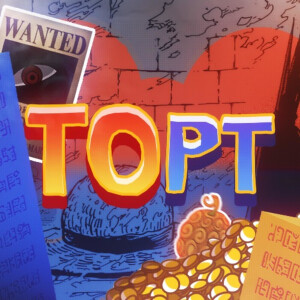More Episodes
Comic Picks #431: Batman -- One Bad Day
 2024-10-30
2024-10-30
 3
3
Comic Picks #430: Blood on the Tracks
 2024-10-16
2024-10-16
 5
5
Comic Picks #429: Void Rivals vol. 2
 2024-10-03
2024-10-03
 4
4
Comic Picks #428: Once Upon a Time at the End of the World
 2024-09-18
2024-09-18
 4
4
Comic Picks #427: Alien at Marvel
 2024-09-04
2024-09-04
 10
10
Comic Picks #426: Star Trek -- Day of Blood
 2024-08-21
2024-08-21
 10
10
Comic Picks #425: Delicious in Dungeon
 2024-08-07
2024-08-07
 15
15
Comic Picks #424: X-Men -- The Krakoan Era Finale
 2024-07-24
2024-07-24
 15
15
Comic Picks #423: Hellsing
 2024-07-10
2024-07-10
 12
12
Comic Picks #422: Miracleman -- The Silver Age
 2024-06-26
2024-06-26
 16
16
Comic Picks #421: Transformers by Daniel Warren Johnson vol. 1
 2024-06-12
2024-06-12
 14
14
Comic Picks #420: Buried Garbage of Manga -- Goldenboy
 2024-05-29
2024-05-29
 12
12
Comic Picks #419: Kaguya-sama -- Love is War
 2024-05-15
2024-05-15
 16
16
Comic Picks #418: Star Wars -- Dark Droids
 2024-05-02
2024-05-02
 16
16
Comic Picks #417: Fire Power
 2024-04-17
2024-04-17
 11
11
Comic Picks #416: Void Rivals vol. 1
 2024-04-03
2024-04-03
 16
16
Comic Picks #415: The Metabaron
 2024-03-20
2024-03-20
 17
17
Comic Picks #414: Joe Kelly & Ken Niimura
 2024-03-06
2024-03-06
 19
19
Comic Picks #413: Golden Kamuy
 2024-02-21
2024-02-21
 20
20
Comic Picks #412: Best of 2023
 2024-02-07
2024-02-07
 23
23
Create your
podcast in
minutes
- Full-featured podcast site
- Unlimited storage and bandwidth
- Comprehensive podcast stats
- Distribute to Apple Podcasts, Spotify, and more
- Make money with your podcast
It is Free
You may also like

Otaku’s Anonymous


Dinner with the Heelers - A Bluey Podcast


That One Piece Talk


The Anime Effect


The One Piece Podcast


- Privacy Policy
- Cookie Policy
- Terms of Use
- Consent Preferences
- Copyright © 2015-2024 Podbean.com


 iOS
iOS Android
Android